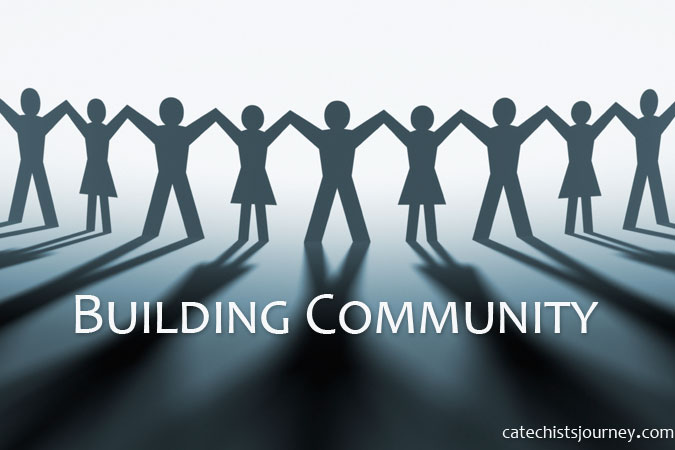
Every faith formation experience should strive to form community since we, as people formed in the image and likeness of a Triune God, are inherently communal. It is in community that we experience Christ and are formed in Christ. The National Directory for Catechesis reminds us that, “Catechesis prepares the Christian to live in community and to participate actively in the life and mission of the Church.” (20) In his book, The Intentional Christian Community Handbook, author David Janzen indicates that, in order for a group of people to experience a sense of community, they must have “thickly overlapping lives.” Here are some ways to create such “thick overlap” of lives on your way to building a sense of community in your learning space.
- Check your seating arrangement. If possible, create a seating arrangement that fosters a sense of community. Avoid arrangements in which individuals or small groups can isolate themselves from the larger group.
- Create a community covenant. Communities formulate and abide by rules that express identity and expectations, define acceptable behavior, and outline ramifications for violations of rules. Here’s an example of such a covenant, which participants should be invited to help shape.
- Create and practice prayerful rituals. For Catholics, ritual is part of our language of mystery, and language holds a community together. Create and regularly practice prayerful rituals that create a climate of prayer in your learning space, and acknowledge the presence of God, who holds us together in community.
- Incorporate silence. This may seem counterintuitive, but shared silence that is deep, profound, and reverent is a powerful tool for building community. If you’ve ever experienced a silent retreat, you can vouch for the fact that sharing silence with others is very intimate.
- Integrate cooperative learning. In community, people work in cooperation with others. While it is good to have individualized experiences in learning, cooperative learning is one of the ways that catechesis “prepares us to live in community.” (NDC 20)
- Display photos of your learning community in action. Get in the habit of taking pictures when your learners are working together, and then display them in your learning space so that participants see themselves as vital members of the community when they enter that space.
- Invite personal prayer intentions, and pray for them communally. Few things forge the bonds of community more powerfully than shared joy and shared pain. Invite participants regularly to share their personal prayer intentions with the group so that all might join together in shared prayer.
- Assign roles and responsibilities. Communities rely on members to share responsibilities and tasks. Create a list of tasks and responsibilities for your group, and assign them (rotating assignments regularly) so that everyone recognizes that he or she is a vital member of the community.
- Create a sense of welcome and hospitality. Hospitality is not just a “warm fuzzy”—it is the very essence of who we are as a People of God and a key expression of how we see others as being made in the Divine Image and, therefore, worthy of respect and dignity.
- Rally around those who are vulnerable. A powerful way of building community within your group is to build a sense of solidarity and community with others outside of your group, especially those who are poor and vulnerable. A special concern for the poor and vulnerable should be one of the hallmarks of your community.
What are some other strategies for fostering a sense of community in your learning space?





Be the first to comment